Design is human centred and, therefore, designers need to ensure that the products they design are the right size for the user and therefore comfortable to use. Designers have access to data and drawings, which state measurements of human beings of all ages and sizes. Designers need to consider how users will interact with the product or service. Use and misuse is an important consideration.
Anthropometric data sets can vary significantly between populations. Particularly in the fashion industry, the variance in these data sets impacts the size range of clothes for particular markets.
 |
- Ergonomics4schools is a very detailed website explaining Human factors
- From Personal city U on anthropoemtrics
Anthropometric Data
Term: The aspect of ergonomics that deals with body measurements, particularly those of size, strength and physical capacity.
Term: Static (structural) data – Human body measurements when the subject is still.
- The measurements when the body is in a fixed position, i.e static, such as height. joint to joint, skin and bulk.
- Data is collected using standardised equipment such as callipers, stadiometer or anthropometer.
- Design contexts include chair height, door width, etc
Term: Dynamic (functional) data – Human body measurements taken when the subject is in motion related to range and reach of various body movements. E.g. crawling height, overhead reach and the range of upper body movements.
- The measurements that relate a range or reach of various types of body movements such reach, grip strength, reaction times, etc
- Basically carrying out a task.
- Design contexts in can openers, car console features, book shelving reach, etc
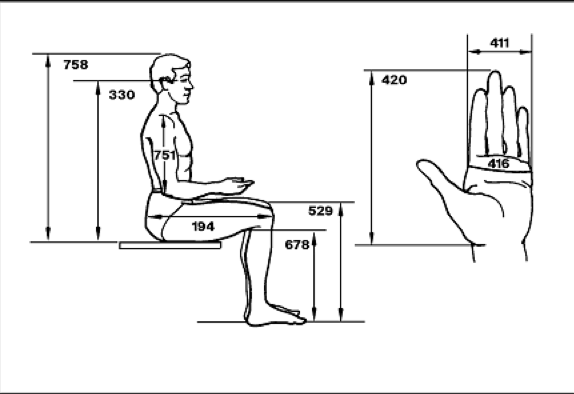 |
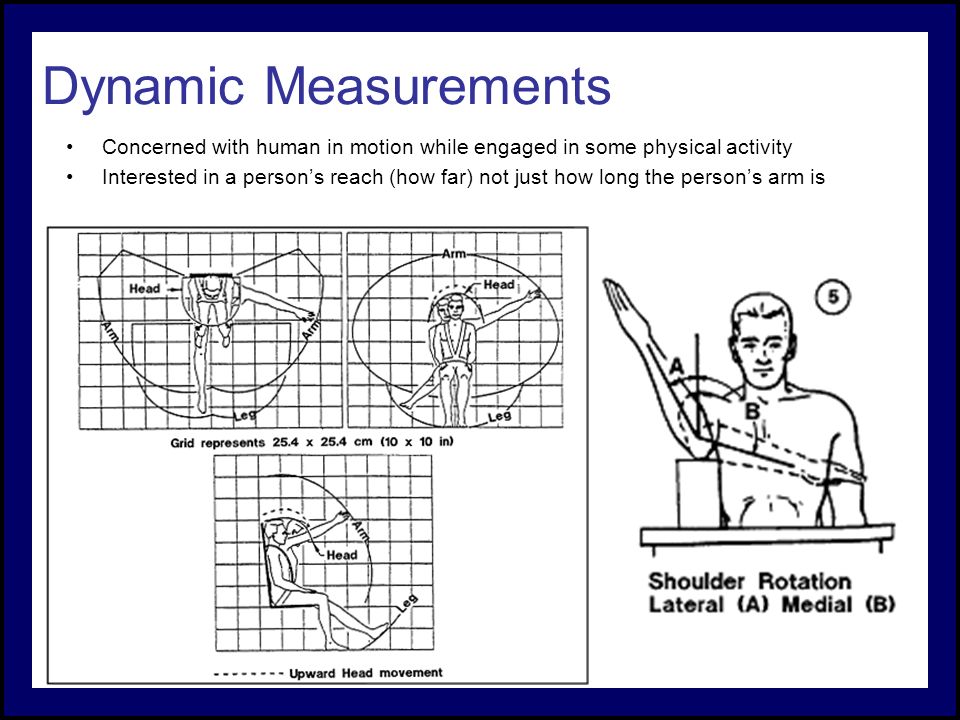 |
| Static Data | Dynamic Data |
Can opener – requires the dynamic data of grip and torque.
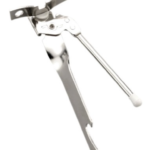 |
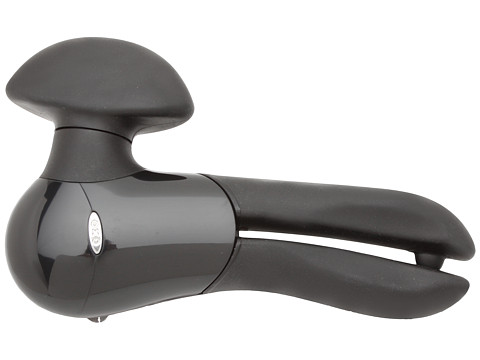 |
| Butterfly Can Opener – can be hard to use for some people. | Ergonomically designed – big easy grip handles and wing nut. |
Activity: On the Padlet match 1 dynamic and 1 static data with a design context.
Primary Data versus Secondary Data
Term: Primary data: Data collected by a user for a specific purpose.
- It is collected by the researcher or designer themselves.This would be carried out if there is a specialised group of people that may not have been studied.
Term: Secondary data: Data collected by someone other than the user.
- There is a great deal of anthropometric data available.
- It is collected and stored in databases or in books.
- Website of a collection of sources.
Reliability and limitations collecting anthropometric data.
- Age, gender, ethnicity, etc need to be considered.
- Body shape and sizes can change over time.
Percentiles and Percentile Ranges
Term: Percentile range: That proportion of a population with a dimension at or less than a given value.
- You need to be able interpret percentile tables for user populations in a design context.
- Consider the 5th, 50th and 95th percentiles in particular, and percentile ranges such as 2.5th to 97.5th and 5th to 95th.
- In the table (Male Rowers) below of the lightest (least heaviest) rowers are the 5th percentile and they weigh 69.8 kgs or less.
- Ergonomic4schools’ Anthropometry section has a nice table showing design contexts. Take note of when dynamic or static data is used.
- interpret percentile tables based on different national and international populations, gender and age. Personal City U on diversity.
- When considering percentile ranges the design context factors in as well.
- If comfort or safety are important than a range of percentiles must be considered. For example motorcycle helmets need to fit snugly in order to function properly in protecting the head.
- If a product is in short use and safety or comfort such as a school desk or waiting room seating, then the 50th percentile would be appropriate.
- Interpret percentile tables in order to calculate dimensions related to a product.
Activity: From the table below:
- Identify the sitting height of the 50th percentile.
- Which is the longest arm length and which group do they belong to?
 |
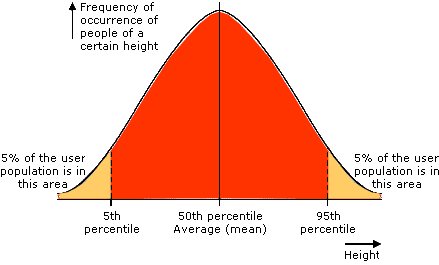 |
Clearance, Reach and Adjustability
Term: Clearance: The physical space between two objects.
-
- eg: two people in a doorway or the space between sitting people.
Term: Reach: A range that a person can stretch to touch or grasp an object from a specified position.
-
- eg arm extension or work envelope.
Term: Adjustability: The ability of a product to be changed in size, commonly used to increase the range of percentiles that a product is appropriate for.
-
- Car driver seats have many adjustments that can accommodate many people, eg seat height, distance to sterling wheel, even height of the steering wheel.
- Often adjustability is used in design contexts where a range of sizes is not possible or expensive to produce.
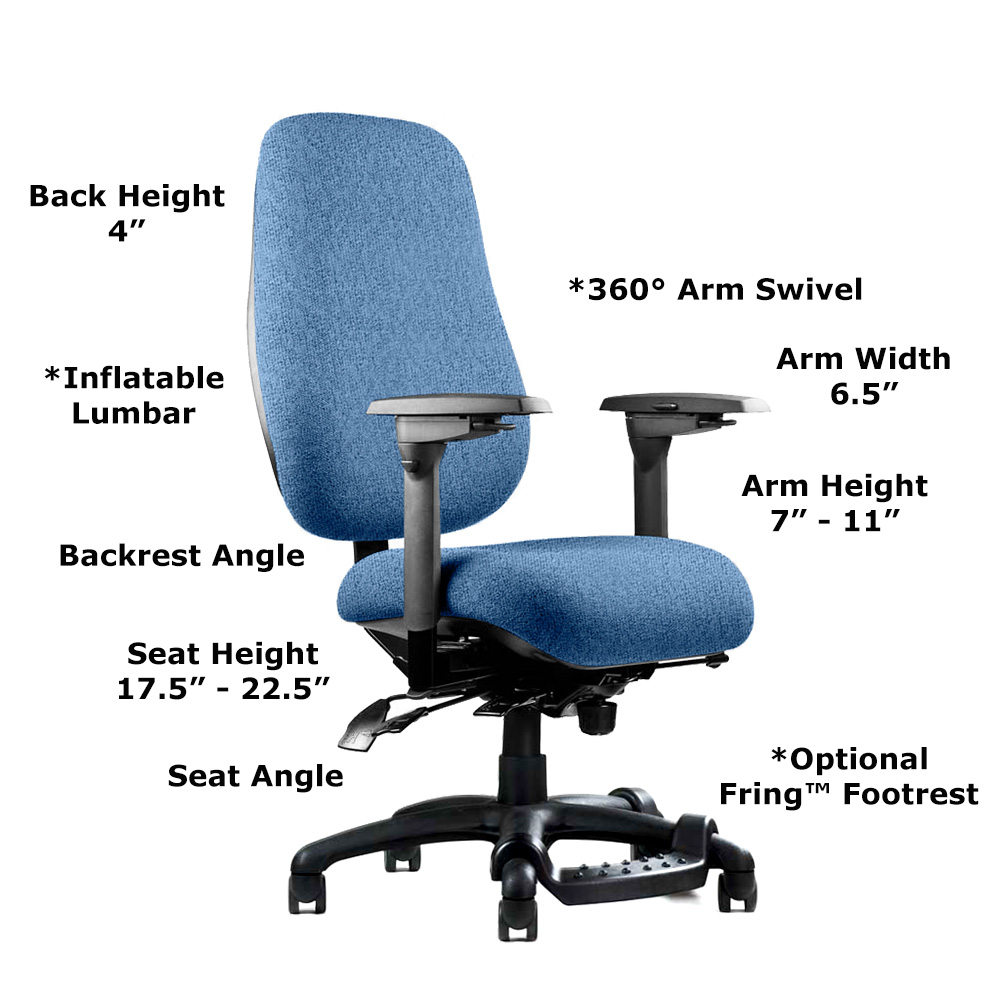 |
 |
 |
| Adjustability | Reach | Clearance |
Range of sizes versus Adjustability
Term: Range of sizes: A selection of sizes a product is made in that caters for the majority of a market.
-
- Clothes or motor cycle helmets come in a range of sizes to accommodate as many percentiles ranges.
- This is often done for comfort and safety. If something is not comfortable then it can lead to unsafe situations due to fatigue.
Term: Adjustability: see above.

Bicycles use a combination of range of sizes (to suit different heights) as well adjustability (the seat and handle bars).
Consider how products can be adaptable for different markets or adjustable to cater for most.
Design Contexts

International-Mindedness
A wide selection of anthropometric data is published and regionalized, for example, Asian data versus western European data. The designer must work with data appropriate to the target market.
Theory of Knowledge
Do the methods of data collection used in design technology have more in common with disciplines in the human sciences or the natural sciences?